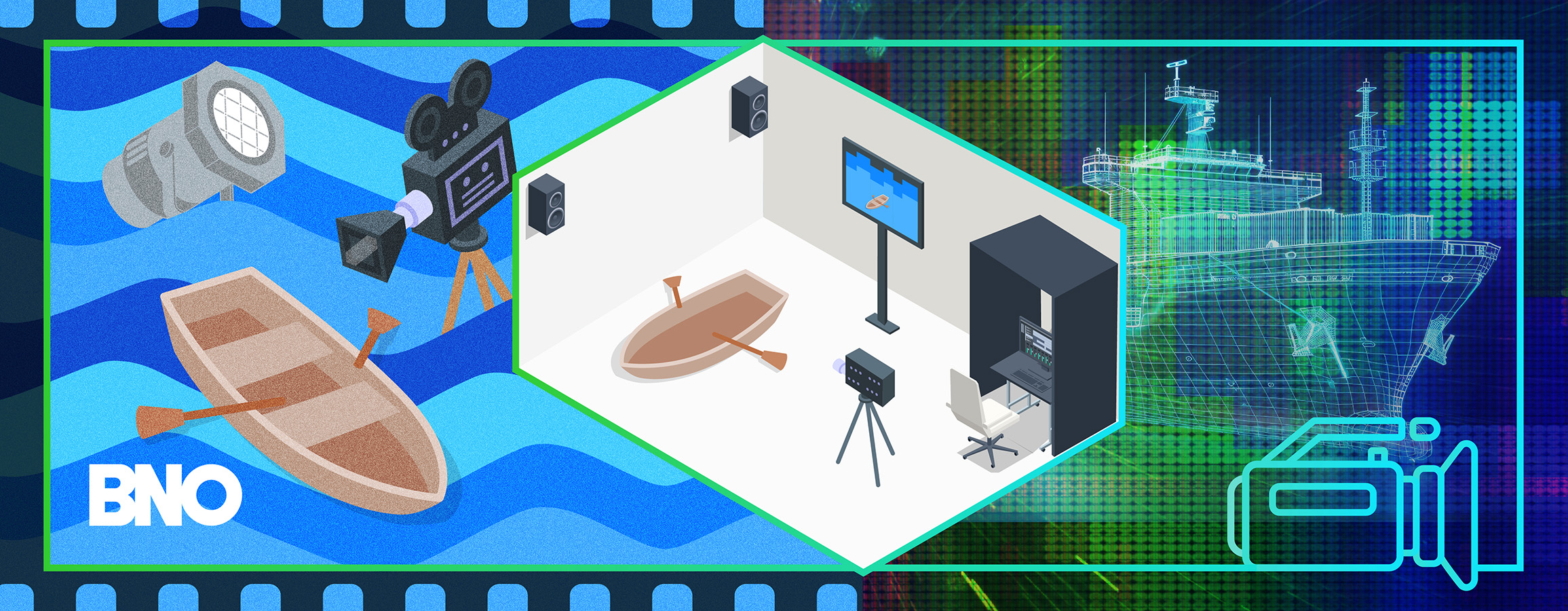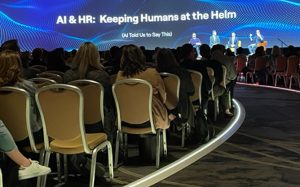Involve
Is It Still All About the Story?

Modern strategies for cost-effective creative excellence
Yeah, yeah, we know: “It’s all about the story.”
Very few marketers need to be sold on the value of video as a medium. Digital video ad spend is growing nearly 80% faster than media overall, with global spending in the market projected to reach $207.5 billion in 2025. But what’s the secret sauce for success? What differentiates viral from ho-hum? When it comes to making a great video, auteurs often strike their best indie filmmaker pose and deliver the stock line, “It’s all about the story,” as the quintessential cornerstone for creative success. In today’s video landscape, perhaps we should rethink that phrase. Maybe it’s not really all about the story—not because that statement is no longer true, but because these days, at least where success is concerned, there’s more to it.
From Edison to Spielberg: A history of friction
For almost 100 years, all the way back to Dawley’s “Frankenstein,” Fritz Lang’s “Metropolis,” and Murnau’s “Nosferatu,” filmmaking followed a remarkably similar process. It was really expensive, really time consuming, and really, really complicated. The first narrative films, including “Frankenstein” and others shot at Edison Studios in the Bronx, were essentially stage plays on film, with a silent camera on a tripod and lit with natural light flooding in through the studio’s glass ceiling. Yet these early productions were already experiencing the friction and distance between the director’s dream and what finally lights up the screen.
For the 1910 version of “Frankenstein” hours were needed to reload and reposition the camera for a close-up. Costumes and makeup had to be remade with contrasting colors for black-and-white film. Shots could only be made when the sun was right. And when directors started moving the camera around for true visual storytelling, that friction increased exponentially. Sixty years later, when Steven Spielberg directed “Jaws,” the logistics of cameras, lighting, sound, talent performance, and practical special effects—all on the open ocean—meant an entire production day often resulted in only two usable takes. And the cost? Even a small crew still consisted of 20–30 talented, left-brain/right-brain production specialists. A motion picture camera rented for $650 a day; a lens was $250; five minutes of final film cost about $2,000—and that was in 1970s dollars.
For most of its history, making motion pictures was an intricate dance, involving lots of people, equipment, time, and money—where every piece of that process tries to reverse-engineer the final design into component parts, hoping the final reassembly delivers the dream. “All about the story” is a callback to that gap between the idea and the result, and its inescapable implication: that filmmaking’s inherent cost, effort and complexity, and a subsequent myriad of places to stray from the core vision, often resulted in a mess rather than what the creative team saw in their heads.
The digital revolution changes everything
Today, the revolution of digital film has upended a great deal of that traditional friction, distance, cost, and complexity. Gone are the days of wondering whether an actor blinked in that last close-up; or taking the risk that the entire company’s future balances on the cost of a single film; or sweating bullets in the morning dailies room, waiting to see if all the footage you shot the night before was underexposed—and now garbage—12 hours after the set was struck and dismantled.
Yep, those days are gone. Hurray! So creative excellence should now be cheap, fast, and completely uncomplicated, right? Well … not exactly. Yes, Steven Soderbergh shot a feature on an iPhone. Yes, the act of processing film is pretty much gone. AI (artificial intelligence) and smart software can remove a lot of the technical grunt work. With these changes, a new challenge has surfaced. While the digital film renaissance has brought many incredible advancements, it has also led to the frequent abandonment of the tried-and-true best practices of traditional filmmaking: such as going for the authenticity of natural light, even if it looks lousy; or wildly shooting tons of useless footage to capture a small amount of random magic—instead of intentionally conjuring that magic at the storyboard stage and then executing it on set.
So, what does that mean for high-impact video in today’s production world? Budgets don’t have to be seven figures anymore, but they’re rarely unlimited; ROI still matters. The barriers to entry may have lowered, but now with so many ways to make a video, the question of “how do we get there?” is more “all about the story” than ever before.
Here at BNO, we’re exploring every new video tool that shows up on the scene, from virtual production to AI. But our forward-looking POV is rooted in history: The path to cost-effective creative excellence means adopting new technologies in a way that frames all production processes, not just the creative ones, in the still-relevant lessons of traditional filmmaking.
It all starts before “Action!”
We start at the beginning. As digital production tools continue to evolve and reshape the industry, preproduction and pre-visualization have truly never been more important. Figuring out what each shot should look like ahead of time is critical for success, especially in virtual production where all the magic happens in-camera, in real-time. Background environments, lighting, camera movement, it all must be ready when cameras start rolling—there’s no fixing mistakes in postproduction! BNO has invested a lot of time and effort in developing advanced tools to accurately scope a production before the work starts—tools that analyze the best style and format for the message, based on available budget. We’ll leverage virtual and remote location scouting to plan where the sun will rise above our hero, or when that train will be heading toward the horizon.
We use animatics and 3D shot visualization in order to ensure that the camera, light, and sound crews hit the ground running once expensive location or studio time starts ticking. Logistics are exchanged seamlessly through our secure Production Partner portal, linking talent and crew with our line producers.
Production, post, and the power of knowing
The ultimate goal is to know exactly what great looks like, for every shot, before the first take.
Production follows a shot-by-shot analysis to determine the most efficient, cost-effective approach for what’s happening in-frame—but one that doesn’t compromise target quality. If the action is more important than the color quality, let’s shoot via DSLR (digital single-lens reflex) or even iPhone. How about using a drone instead of a camera crane, or making something from scratch with some AI prompts, or shooting the entire video without ever leaving an XR (extended reality) virtual studio? We go after whatever delivers the shots we need and streamlines the production calendar without sacrificing creativity or quality.
In post, we’re leveraging AI to handle tasks like captioning, automatically syncing multi-camera footage and sound, improving low-quality video or cleaning up audio, and even extending shots or creating new ones with well-structured prompts. Proxy editing strategies—where low-resolution previews are linked to huge source footage files—allow editors and directors to work in tandem, facilitating creative give and take, getting to a final cut in a fraction of the time once required to physically splice pieces of film together.
So … is it still all about the story?
So, it is true: With all these new tools, video truly can be cheaper, faster and less complicated than it used to be. But that requires a focused effort, keeping the vision at the center. Every phase of production must leverage these new tools in a way that often channels the days of Edison Studios. At BNO, we’re committed to finding that balance. Perhaps today, when I lean back and strike my best indie filmmaker pose, I’ll now start saying: “It’s all about how we tell the story.”



